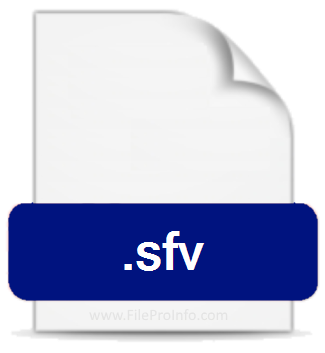Data verification is done using a Simple File Verification (SFV) file. In a file that typically, though not always, has the CRC32 checksum value.
The SFV file is created using a tool that can determine the checksum of a file, folder, or disk. The goal is to confirm that a specific piece of data is exactly what you want.
The checksum is altered by each character that is added to or subtracted from a file; this also holds true for files and file names contained within folders or drives. As a result, even if one character is misspelled or the size is slightly changed, the checksum is distinct for every single piece of data.
For instance, a program can check if all the data that were meant to be copied actually exist on the CD while validating the files on a disc after they have been burned from a computer.
The same holds true if you verify the checksum of an internet-downloaded file. A match can ensure that the file you requested is the one you now have and that it wasn’t corrupted or deliberately altered throughout the download process if the checksum is calculated, displayed on the website, and checked again after it has been downloaded.
Running A Basic File Verification And How To Make An SFV File
Three free tools—MooSFV, SFV Checker, and RapidCRC—can create the checksum of a file or collection of files and insert it into an SFV file. RapidCRC allows you to build a file (and even an MD5 file) for each and every file in your list or directory. You may also create a single SFV file to hold all of the files.
Another is the data copying application TeraCopy. It can confirm that everything was duplicated and that no data was lost in the process. Along with the CRC32 hash function, it also supports the MD5, SHA-1, SHA-256, Whirlpool, Panama, RipeMD, and other hash functions.
SFV files can be created on macOS using SuperSFV or checkSum+. On Linux, Check SFV is a tool you can use.
Another one is QuickSFV, which runs fully from the command line and is compatible with both Windows and Linux. For instance, to create the SFV file in Windows, use Command Prompt and input the following:
Quicksfv.exe -c test.sfv file.txt
In this illustration, the command -c creates the file, determines file.txt’s checksum value, and then inserts it into test.sfv. These instructions presuppose that the TXT file and QuickSFV application are located in the same folder.
Opening An SFV File
Since SFV files are plain text, any text editor, including Notepad for Windows, Leafpad for Linux, and Geany for macOS, can be used to view them. The format is also supported by several free text editors, including the well-known Notepad++.
Several of the aforementioned applications that compute checksums can also be used to open SFV files (TeraCopy is one example). However, they typically open the SFV file or files in question and then compare a fresh checksum test against the one you have, as opposed to letting you read the plain text content contained therein like a text editor does.
These files are consistently constructed with the file name listed on one line, followed by a space, the checksum, and finally the file extension. For a list of checksums, more lines can be put below others, and semicolons can be used to insert comments.
Conversion of SFV Files
Being a text file, an SFV file can only be converted to other text-based formats. This might be TXT, RTF, or HTML/HTM, but because the only purpose is to store the checksum, they typically stay with their SFV file extension.
As a result, you are unable to save your SFV file in any other format, including ISO, ZIP, RAR, or any video format like MP4 or AVI.
How To Open SFV File
A typical text editor is unlikely to recognize SFV files by default. If so, try starting the program first, then using the Open menu to find the file if nothing occurs when you double-click to open it.
Some file extensions may resemble SFV files a lot but in reality have nothing to do with them. Examples of these include SFZ, SFM, and SVF (a vector file format).
SFVIDCAP is an intriguing file extension that shares a few letters with it at the beginning, but this is merely a coincidence. It is utilized by a format that houses videos for an application for video editing.
Additionally, keep in mind that SFV files are occasionally saved with videos. In this collection, subtitles are frequently provided using SRT files. Although the names of the two text-based formats may be similar, they are unrelated and cannot be transferred to or from one another for any functional purpose.
